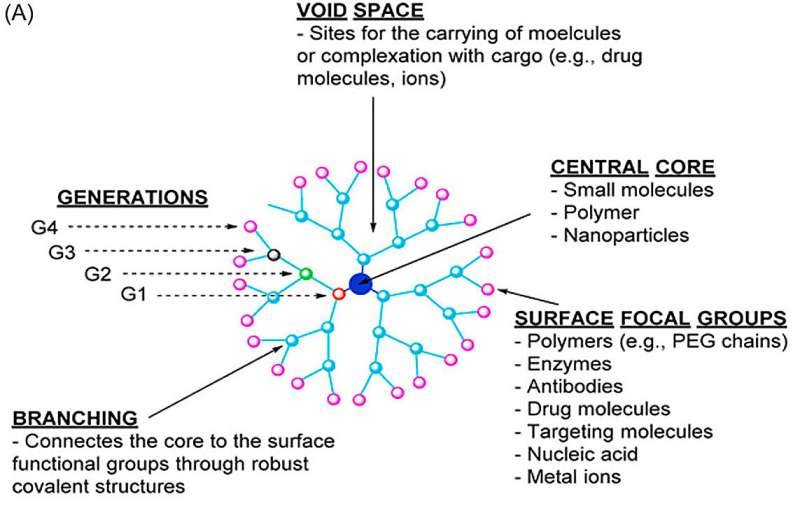This article has been reviewed according to Science X's editorial process and policies. Editors have highlighted the following attributes while ensuring the content's credibility:
fact-checked
proofread
Advances and applications of nanoparticles in cancer therapy

The research team of Prof. Changyang Gong from the Department of Biotherapy, Cancer Center and State Key Laboratory of Biotherapy, West China Hospital, Sichuan University has published a new review showing that rapid growth in nanoparticles as delivery systems hold vast promise to promote therapeutic approaches for cancer treatment. Dr. Xianzhou Huang served as team leader.
The research is published in the journal MedComm – Oncology.
Presently, a diverse array of nanoparticles with unique properties has been developed. These nanoparticles applied in cancer therapy include but are not limited to micelles, liposomes, polymeric nanoparticles, dendrimer nanoparticles, polymersomes, protein nanoparticles, inorganic nanoparticles, exosomes, biomimetic nanoparticles, molecularly imprinted nanoparticles, and hybrid nanoparticles.
However, as complicated as cancer is, there are always different obstacles in treating this disease. Fortunately, nanoparticles have been developed to overcome different challenges and to achieve sophisticated delivery routes for the enhancement of a series of therapies.
These strategies guarantee the delivery and function of loaded drugs. Thanks to the versatility and modifiability of nanotechnology, they can enable the cargoes to long-circulation time, targeting abilities and responsive to pH, redox, GSH, enzymes, hypoxia, ATP, temperature, and ions, even secure the cargoes to their destined subcellar localizations.
Such powerful nanotechnologies have been widely applied in the treatment of cancers. Inspiring advances have been achieved in the field of cancer therapy using nanoparticles. The applications are not limited to single therapies, such as chemotherapy, radiotherapy, phototherapy, immunotherapy, and gene therapy, but also to combination therapies.
A good example is a cooperative nano-CRISPR scaffold (Nano-CD). Nano-CD has co-delivered cisplatin and CRISPR/dCas9 plasmid for GSDME protein production, selectively inducing strong pyroptosis in tumor cells by activating the caspase-3 pathway and the expression of GSDME.
We are rapidly acquiring a much deeper understanding of the challenges and opportunities of a diversity of nanoparticles for cancer therapy. This review has presented the up-to-date progression of nanoparticles for addressing these challenges and alternatively creating more novel opportunities.
We expect that these successions and unremitting efforts of researchers in the field will further promote nanoparticles to shift the paradigm of cancer therapy and make nanoparticle-associated cancer treatments as common clinical approaches of cancer therapy true in the foreseeable future.
More information: Xianzhou Huang et al, Advances and applications of nanoparticles in cancer therapy, MedComm – Oncology (2024). DOI: 10.1002/mog2.67
Provided by Sichuan International Medical Exchange and Promotion Association



















